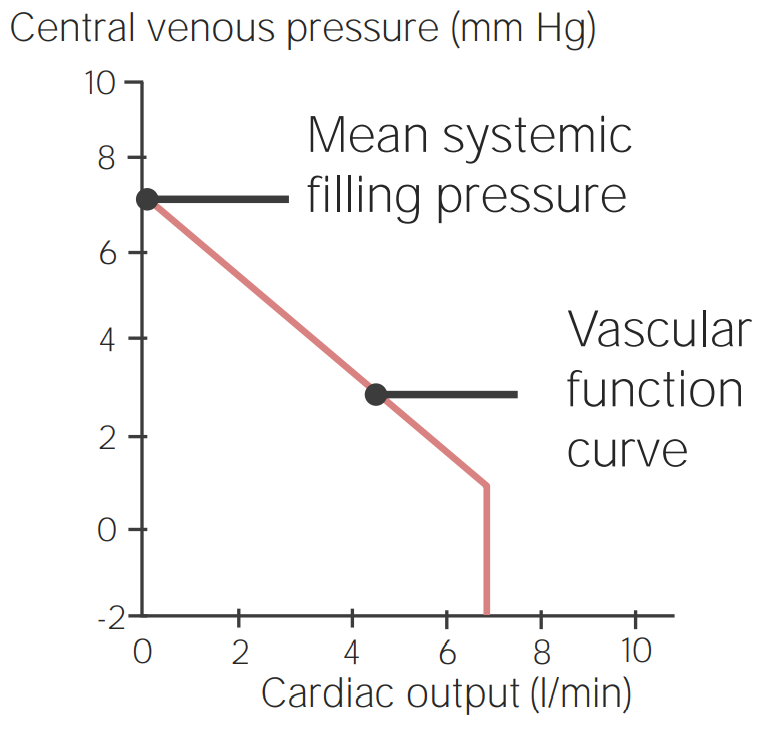Playlist
Show Playlist
Hide Playlist
Central Venous Pressure (CVP) – Regulation of Venous Pressure
-
Slides RegulationVenousPressure VascularPhysiology.pdf
-
Download Lecture Overview
00:00 Now we're going to discuss venous pressures and how a vascular function curves are regulated. Venous pressure is a little bit differently regulated than arterial blood pressure. 00:16 Venous or veins have smooth muscles so they can constrict and dilate. You can also change the luminal diameter of any vein. These, however, are less thought of to be regulatory factors because they don't directly affect blood pressure. They only indirectly affect blood pressure because when they constrict you return more blood to the heart, therefore you increase preload and cardiac output. If you dilate a vein, you have lower preload and lower cardiac output. This is an example of a dilated vein. So now you have an increase in luminal diameter. 01:02 The increase in luminal diameter can do a couple of things for you. One is it slows the time fluid travels through it and it also has higher capacitance meaning that it can hold more fluid. You can also constrict these veins by pulling them together decreasing their luminal diameter and this is also a smooth muscle contraction. This speeds up the transit time through the venous system and it also decreases the volume within the veins and therefore that will pass that volume up to the heart. A great example of how this movement of vein fluid works is by the skeletal muscle pump. The skeletal muscle pump is a way by which the muscles around the veins squeeze together to move the blood against gravity. This can be seen in this diagram where the muscles on both sides of the vein squeeze, they start to push the blood up towards the heart and then when they relax the veins have valves in them which allow the veins to collapse and prevent the back flow of the venous fluid. Then as the muscles constrict again, they'll push more fluid up and this is a nice pump-like movement to keep returning blood back to the heart.
About the Lecture
The lecture Central Venous Pressure (CVP) – Regulation of Venous Pressure by Thad Wilson, PhD is from the course Vascular Physiology.
Included Quiz Questions
Which of the following effects on the heart is caused by vasoconstriction of the venous system?
- Increased preload
- Decreased preload
- Decreased cardiac output
- Decreased blood volume
- Decreased heart rate
Which of the following property of veins prevents the backflow of blood?
- Presence of valves
- Increased capacitance of veins
- Increased diameter
- Having smooth muscles in their walls
- Increased elasticity
Customer reviews
5,0 of 5 stars
| 5 Stars |
|
1 |
| 4 Stars |
|
0 |
| 3 Stars |
|
0 |
| 2 Stars |
|
0 |
| 1 Star |
|
0 |
simply clear and good. Well captured within the 3 min and for long (I am sure) !




